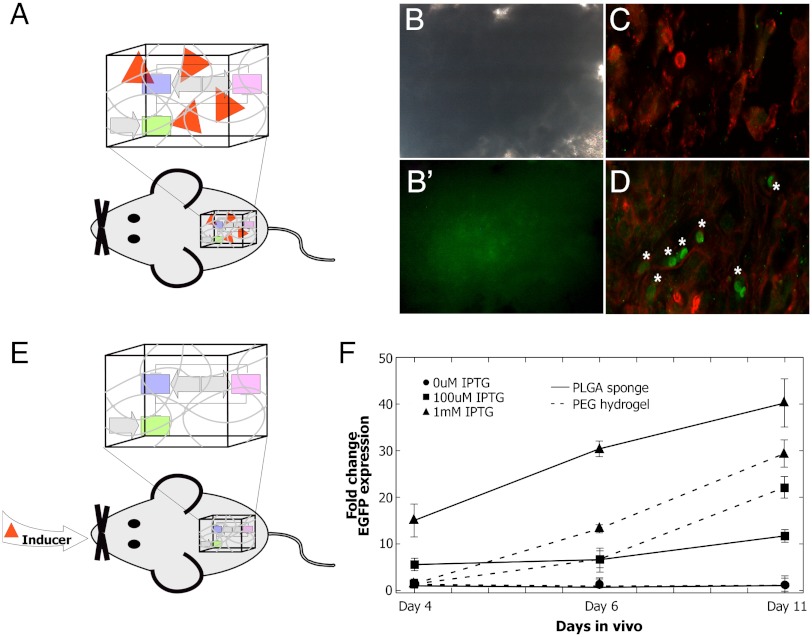Fig. 5.
Therapeutic applications of synthetic biology. (A) Local induction. PLGA sponges with and without IPTG containing CHO cells stably transfected with LTRi_EGFP were implanted subcutaneously of athymic mice. (B) Bright field image of sponges removed 13 d after implantation and (B′) EGFP expression was assessed using microscopy. (C) Confocal image of PLGA (no IPTG) sponge with CHO cells stably transfected with LTRi_EGFP immunolabeled with phalloidin and EGFP antibodies (D) Confocal image of PLGA-IPTG sponge with CHO cells stably transfected with LTRi_EGFP immunolabeled with phalloidin and EGFP antibodies. EGFP expressing cells (noted with *). (E) Systemic induction of genetic circuits in vivo. Sponges and hydrogels each containing CHO cells stably transfected with LTRi_EGFP were implanted subcutaneously or in the interperitoneum of athymic mice. Twenty-four h after the surgery, IPTG was added to their drinking water (0 mM, 100 uM, or 1 mM). The materials were removed four, six, and 11 d after initial introduction of IPTG to the drinking water. EGFP expression was assessed using RT PCR. All data was normalized to 250 pM IPTG induction in the media. All expression levels were normalized to the ribosomal protein, L19 as the reference gene.

